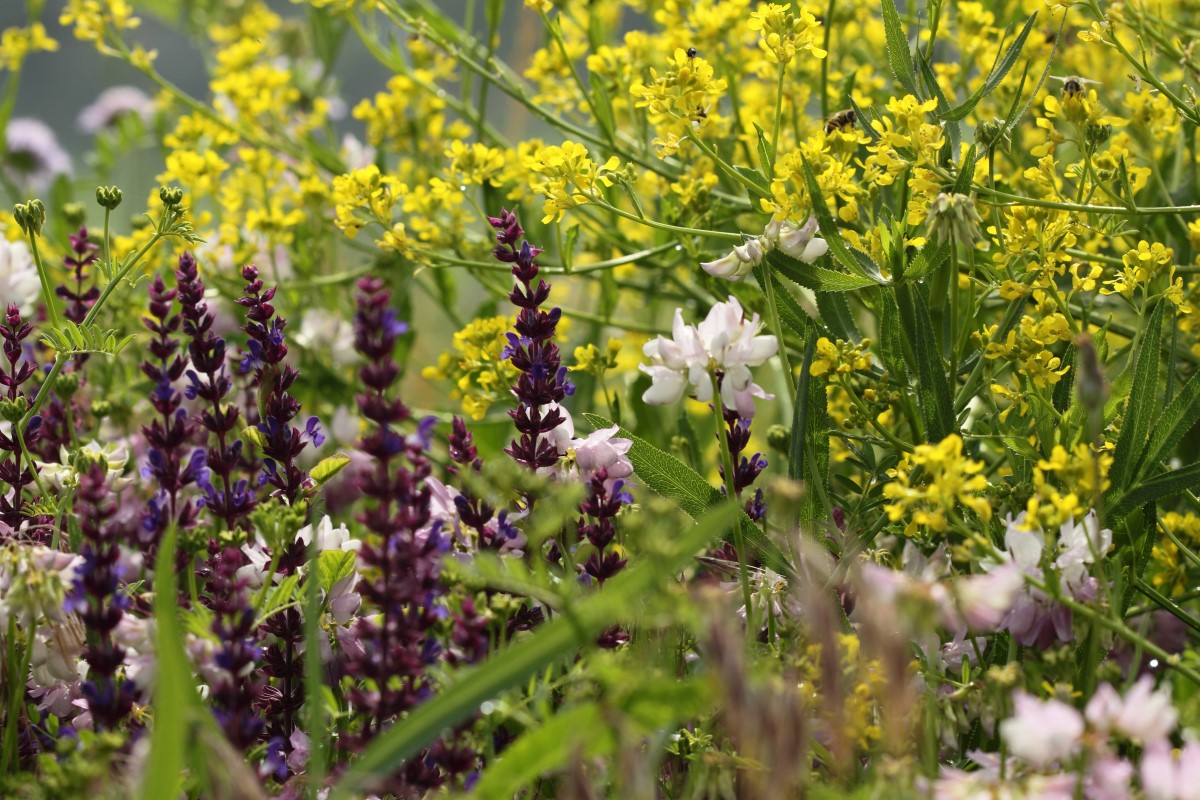
The members of the ‘Lendület’ Seed Ecology Research Group of the Centre of Ecological Research followed the vegetation dynamics of artificially created grassland patches for several years. The researchers found that in the course of grassland-restoration the efforts at the beginning pay off: the simultaneous sowing of grasses and forbs in fallow lands leads to the development of species-rich grassland communities and efficient weed control.
The aim of ecological restoration is to recreate something lost or deteriorated. Grassland restoration aims to recreate grassland ecosystems and communities. In many cases recreation of the original ecosystem is not a possibility, but restoration still can help to cover landscape scars created by human activities. Restored grasslands not only improve landscape aesthetics but offer many different ecosystem services as well (e.g., forage for the livestock, nectar for pollinators, effective carbon capture and storage, and soil erosion control).
When grassland restoration is done with seed sowing, the success of restoration depends on many factors, such as the identity of sown species, the timing of sowing, the quantity, quality and proportion of sown seeds. In the current study the researchers aimed to find the best timing to sow grasses and forbs to achieve the highest possible species richness, to enhance forb-establishment and to hamper weed encroachment.
„The matrix of the grasslands is composed by grasses. Previous works found that sowing grass seeds certainly results in a closed grass sward within a few years, and also hampers weed encroachment. That is why grass sowing is preferred in landscape-scale restoration works. But it also has its feedbacks: the new grassland will be species-poor, as the closed grass sward hampers the establishment of other grassland species.” – explained Réka Kiss, the first author of the manuscript published in the Nature- Scientific Reports.
To create species-rich grasslands the use of diverse forb seed mixtures is needed. However, the compilation or production of such seed mixtures requires more efforts (seeds of more species are needed in good quality and high quantity). Due to these reasons diverse seed mixture is less likely to be used in the early stages of restoration. In later stages, however, it will need more effort from the practitioners to secure the successful establishment of species.
„We were curious of the most suitable timing: If we want to sow both grasses and forbs in a fallow for a species rich grassland, which is the time-lag when with the least effort we can achieve the most?” – explained Réka Kiss – „At the beginning of the experiment we created 36 patches in a recently abandoned land. We sow exclusively grass seeds, exclusively diverse forb seed mixture (20 species) or both of them into the patches. When we combined the grass with the forb seed mixture we sown them simultaneously (at the same time), or the diverse seed mixture was sown with a delay of 1, 2 or 3 years.”
Following the development of the patches for several years the researchers found that the best results were achieved when seeds were sown simultaneously, without time-lag. In such patches the species richness of species was the highest, the weeds were less successful and the establishment success of sown forb species was the highest. This is the most cost-effective and most successful method among the studied sowing regimes. If simultaneous sowing is not a possibility, sowing forbs one year later than grasses is still effective. However, after one year the advantage received by grasses cannot be outcome by the forbs, their successful establishment in later stages can be promoted only by active interventions.


